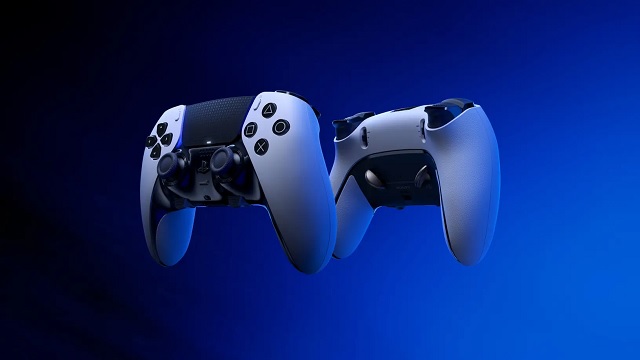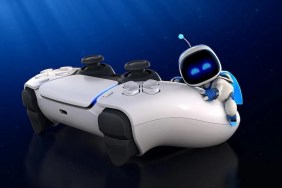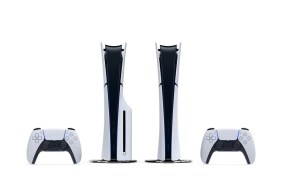Sony’s first official enthusiast-centric controller has arrived for the PlayStation 5. The DualSense Edge promises nearly endless customization paired with official system support to give PlayStation gamers the ultimate control over their games, and perhaps a competitive advantage. We’ve spent the past week or so with the newest high-end controller, so it’s time to see if this device is worth the high asking price.
Just a little déjá vu
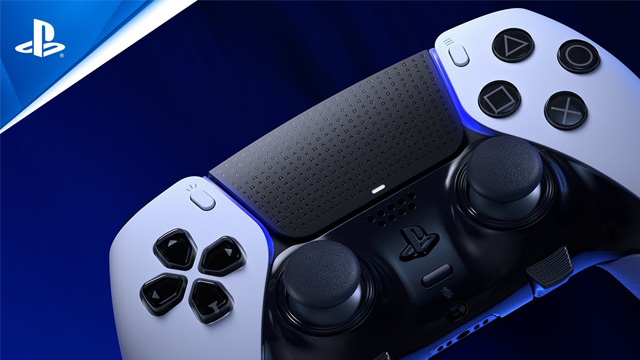
Up until now, Sony has only offered a single official controller for the PS5. The original DualSense was quite an upgrade from the DualShock 4, as it sported all the tech from that controller with new innovative additions such as adaptive triggers and haptic feedback. The DualSense Edge keeps all of that delicious tech and adds customization as the cherry on top. From the triggers to the analog sticks, and inclusive of such functionality as remapping buttons, all the standard trappings of a modern “pro” controller are here, and we’ll spend some time explaining each.
The DualSense Edge arrives in a hard plastic carrying case, which means you can easily travel with this or a standard DualSense in tow, confident in the knowledge that it’ll be safe from all but the most extreme bumps and bangs as a travel companion.
The case is secured with two zippers, each of which sport the PS logo – a common motif of Sony’s is to include either that or the iconic face buttons on a lot of different surfaces, in subtle ways that deftly avoid being too garish or flashy while not detracting from the overall premium look and feel of the product. A Velcro-held opening on the back even allows for the controller to be charged while remaining in the case, another thoughtful inclusion that shows the kinds of use cases Sony’s team thought of while developing this premium controller.
One potential issue that we noticed here, however, is that the enclosed space of the case does cause the controller to heat up a bit more than usual while charging, which may impact the battery over the life of the device, though this is pure speculation at this point.
The first thing you’ll notice about the DualSense Edge is that it looks more or less like the original. This is by design, as it means all accessories for the regular DualSense will work with the Edge, such as the official controller charging station. The speaker, microphone, headphone jack, and standard buttons are all in the same spot, so there’s nothing to get reacquainted with in terms of picking the Edge up to play games in the way you are used to. You could, in fact, use the DualSense Edge as-is out of the box without any customization. This would, of course, be a waste of paying a premium for this controller, but the point is that you could!
They’ve changed something
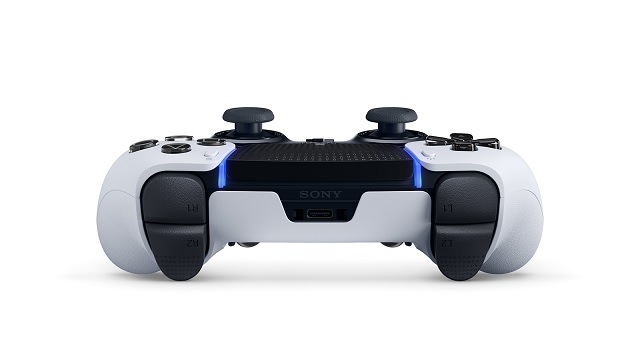
What has changed in terms of overall aesthetics is the color scheme. While the controller is still mostly white, the touchpad and face buttons are now black, with small PlayStation face buttons printed on the touchpad, and white lettering on the face buttons. A
removable black-colored plastic plate also covers the lower portion of the controller, and below that are two function buttons (more on those in a bit). Turning the controller on reveals a few other visible tweaks to the DualSense formula. The diffuse plastic that the LEDs on either side of the controller shine through has been shaped to be a tad longer, giving the light a slightly longer and more styled appearance.
The player indicator LEDs below the touchpad have also been altered, and now have a hard edge and appear pill-shaped. The microphone mute button and LED, alongside the PS button, appear unchanged.
Included alongside the DualSense Edge is a 2.8 meter (9.1 foot)-long USB-A to USB-C charging/data cable. It’s a premium, braided cable that is noticeably heavier in the hand than other cords of the same length. Naturally, the PS logo is embossed on the USB-C end to help you know that you grabbed the right cord. Its length ensures that most setups should have no issues playing on a wired connection, which many gamers considering this controller will want to do to remove any extra input lag.
While we’re on the topic of connectivity, a rather unique piece of this kit is the included cable lock. It’s a small cage-like mechanism that you open up, and lay the USB-C end of the cord inside. Closing it snaps the cord into place, and a locking slider prevents the cord from coming loose and being removed from the controller.
This does not prevent the USB-A portion of the cord from being yanked from the PS5 console, however, but perhaps the thinking here is that smaller tugs during intense gaming moments won’t result in a sudden, round-losing disconnection. This is an interesting inclusion which might provide more peace of mind than anything.
Plenty of combinations to choose from
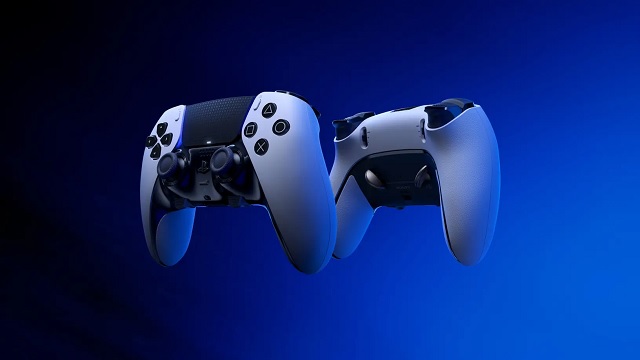
Now, as far as physical customization goes, the DualSense Edge includes two sets of paddle triggers and three sets of joystick tops including the default style which comes pre-installed. Looking at the paddles first, these are installed around the back lower half of the controller, in holes labeled “LB” and “RB.” One set is the more traditional paddle shape, while the other set are in the shape of little half-domes. All four are made of metal and feel hefty and durable.
The reason why you’d choose one design over another seems to be the ease with which the paddle can be depressed – the half-domes offer less leverage and thus require a bit more force in order to actuate, so it would make sense to install these if you have a game’s ultimate move mapped to a paddle to avoid accidentally triggering the action while moving the controller or adjusting your grip. You can, of course, also mix and match these paddles to suit the game you’re playing.
As mentioned, the DualSense Edge comes with standard joystick tops pre-installed, along with two additional sets. These extra sets are dome-shaped and come in short and tall versions. They resemble the joystick tops as seen in earlier DualShock controllers.
I quickly became comfortable with having the standard top installed on the left stick and the taller dome on the right stick. This allows for more precise movements with the right stick, which is helpful in first-person shooters and other games where camera control is key to victory. Regardless of which sticks are used, installation is dead simple: pulling on the joystick pops the top off, and swapping in a new one is done with a satisfying click to confirm everything is in order.
Moving to the backside of the controller, up top are levers for each trigger to adjust their travel distance. Shortening this means you can perform quicker actions because the trigger is covering less distance than usual for a full activation. However, moving these sliders to anything other than the default automatically disables the adaptive trigger mechanism for that trigger – a welcome feature for competitive gamers who wouldn’t want any sort of resistance to get in the way of them performing an action anyway.
Of note here is that the L2 and R2 triggers feature more of those adorable mini PlayStation face button icons on their bottom half, for extra grip. This grip style is also featured along the inside grip of the controller (in addition to the grip which the standard DualSense also shares), which all adds up to a controller less likely to slip from your grip.
Happily repair friendly
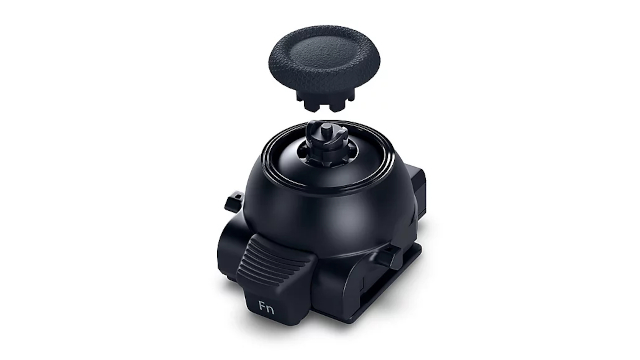
Now we must touch upon the biggest physical change on the DualSense Edge controller – the joystick modules themselves. A release latch can be found on the bottom of the backside of the controller, and when engaged unlocks the black faceplate on the front of the unit. Once that is removed and a lever is raised, each joystick module can be removed entirely, to be replaced or cleaned if needed.
Sony sells replacement joystick modules for around $20 USD each. This does mean that replacing both sticks will set you back $40, which isn’t much cheaper than a standard DualSense. However, that’s still a whole lot less expensive than replacing the entire controller, and user-replaceable parts are a consumer-friendly inclusion that is appreciated, especially at this price point.
While the joysticks are potentiometer-based and thus may wear out or drift after some time, the fact that the DualSense Edge has swappable joystick modules does leave open the possibility of Sony making more reliable Hall effect-powered joystick modules to be swapped in (though this is simply wishful thinking here). At the very least, it does mean there is no lengthy or costly repair needed, as a simple swap is all that’s needed to get your sticks working like new.
Also of note is that the joysticks make a slight noise when they are moved off the center point, a subtle indicator that they have been moved, and in most configurations input will be picked up as soon as this click point is reached. This is perhaps a quirk of the modular system, but also a nice tactile bit of feedback in the joysticks while playing.
At the front of these modules is a function button, and this is where everything really comes together for the DualSense Edge. The PS5’s firmware has already received an update to enable support for the DualSense Edge, and the integration is at the system level. Holding either function button brings up a pop-up menu, and from here the user can quickly swap to a custom profile, adjust various audio settings, or head into the DualSense Edge customization section. It’s here where users will spend most of their time in experimenting to get the perfect setup for their chosen games.
Intuitive button mapping and customization
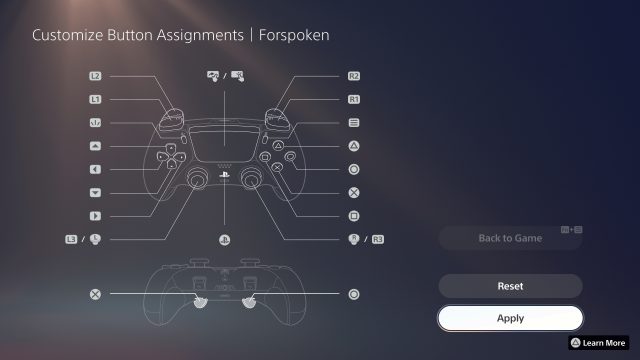
The list of things able to be adjusted is quite impressive: most buttons can be re-mapped, trigger and joystick deadzones can be customized (including a live preview of how your inputs are being interpreted with the proposed settings), joystick sensitivity curves can be precisely tuned to suit certain genres or playstyles, vibration and adaptive trigger intensity can be modified, and of course, these settings can be saved into a custom named profile.
While you can create as many profiles as you want, you can only assign three for quick swapping, as the circle, cross, and square buttons can be assigned to one custom profile each – triangle is reserved to get you back to the default profile. It does feel to me that more buttons could have been utilized for profile assignment, but then the pop-up menu would’ve taken up more screen real estate, so Sony probably opted for the more concise option here.
Whenever you do a quick swap change of profiles, the controller sends a short vibration and a system notification alerts you to this change, though even this aspect can be customized for those who’d rather not see or feel any sort of alert when changing profiles.
While the DualSense Edge has a lot of thoughtful additions, one area that its predecessor was behind the rest of the industry was battery life. Here, unfortunately, things remain the same. Under most conditions, expect to see a low battery warning pop up around the sixth or so hour of uninterrupted gaming, with complete power loss about an hour later.
Of course, you can eke out extra time by disabling adaptive triggers and haptic feedback, and perhaps a tiny bit more by disabling the LEDs. But at that point, you’re pinching pennies as far as the battery budget is concerned. Competitive gamers will likely keep the DualSense Edge plugged in for most of its life, so this is not a dealbreaker per se, just compared to other high-end controllers that feature battery life measured in the dozens of hours, it’s definitely not a spec Sony will highlight any time soon.
DualSense Edge Review: The final verdict
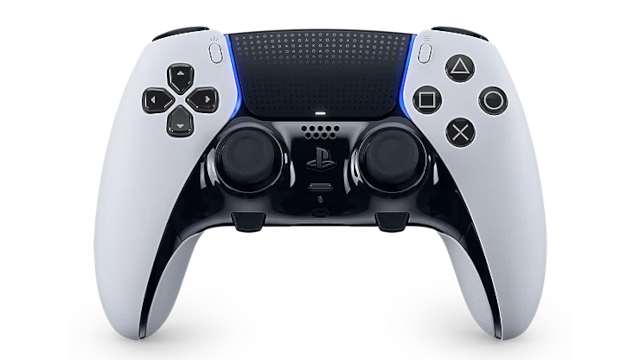
At an MSRP of $199.99 USD, this is the kind of purchase that warrants researching what else is out there. In this price bracket, you could splurge for other third-party controllers, though each of these usually includes some caveat.
The PDP Victrix Pro is a tad cheaper than the DualSense Edge at $179.99 USD but doesn’t have adaptive triggers or haptic feedback. The SCUF Reflex Pro does include those functions, however at $249.99 you’re now spending $50 more for a controller which isn’t directly integrated into the system and isn’t as customizable in terms of functionality. Finally, the TCP Ultimate is a few dollars more, though you lose rumble functionality entirely in order to save a bit on controller weight. So, pricing on the DualSense Edge feels about right.
The DualSense Edge is easily the best gaming controller Sony has ever put out. What it lacks in battery life, it makes up for in versatility. The system-level support for this highly configurable controller is fantastic, and a reminder that sometimes opting for first-party accessories is the best option. The combination of adjustable parts and customizable inputs make for practically unlimited options that are sure to suit any game and any gamer. If you’re looking for a robust controller that should see you through this console generation or want an extra edge against the competition (excuse the pun), then this is the controller for you.
